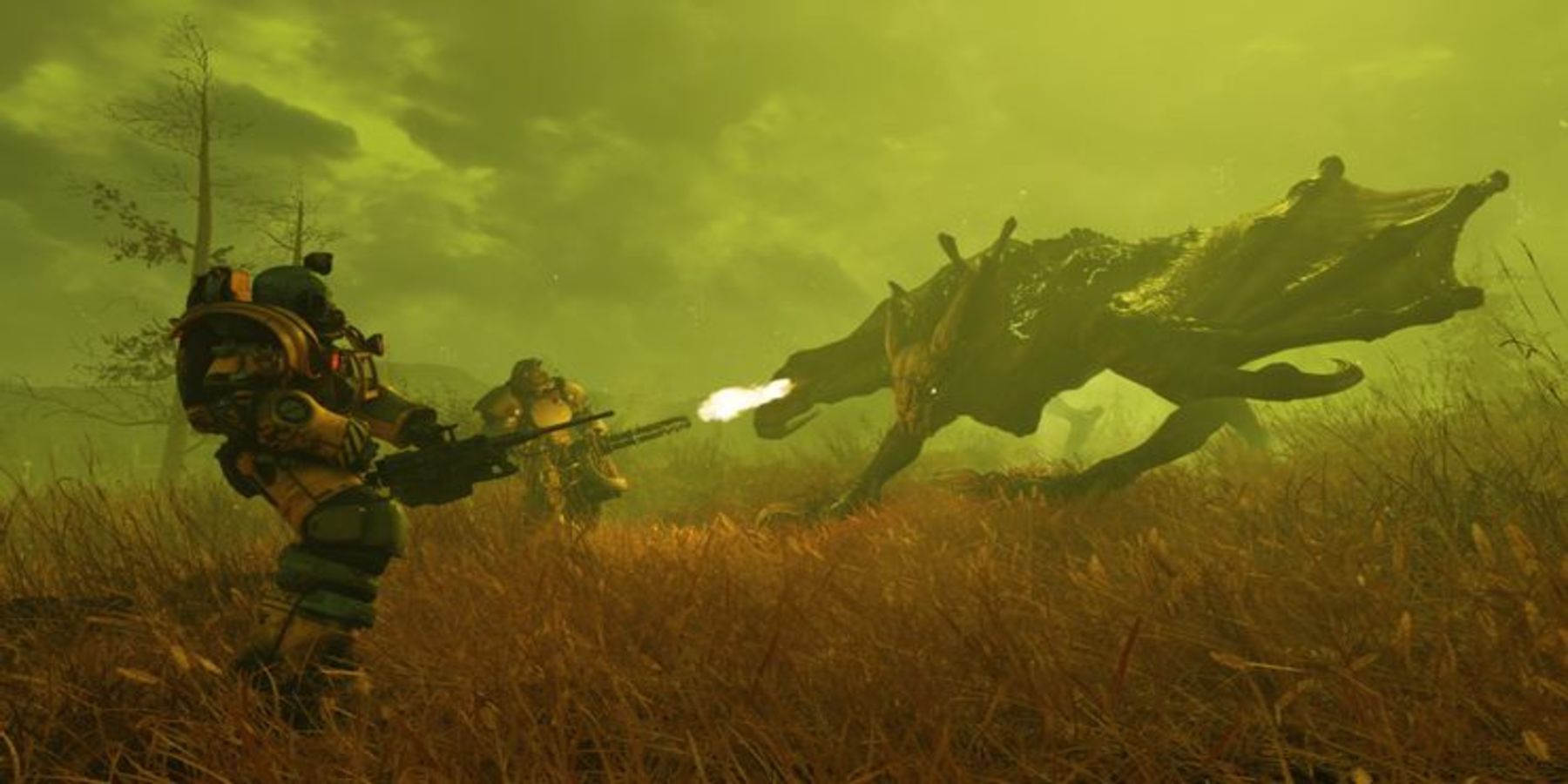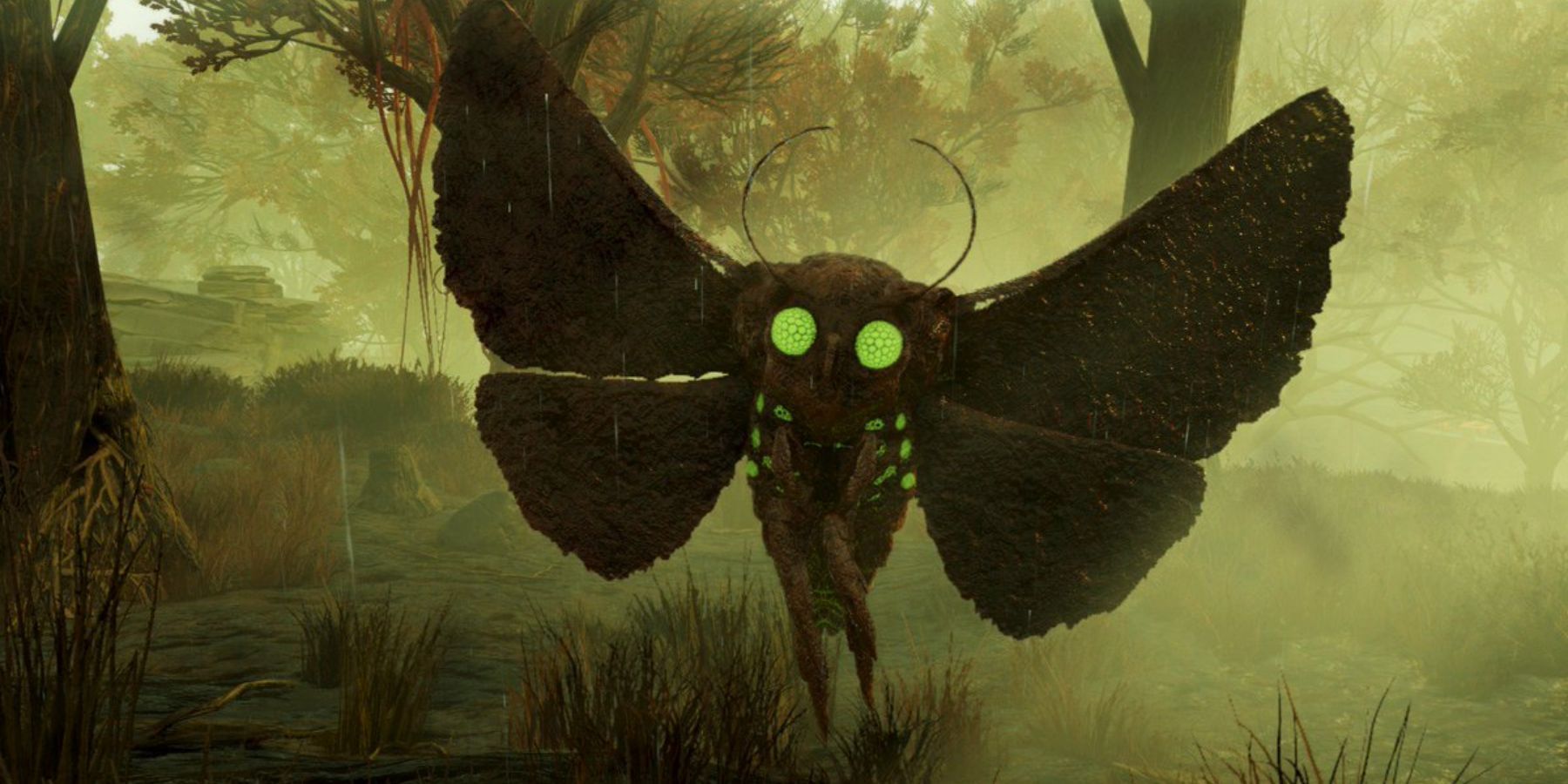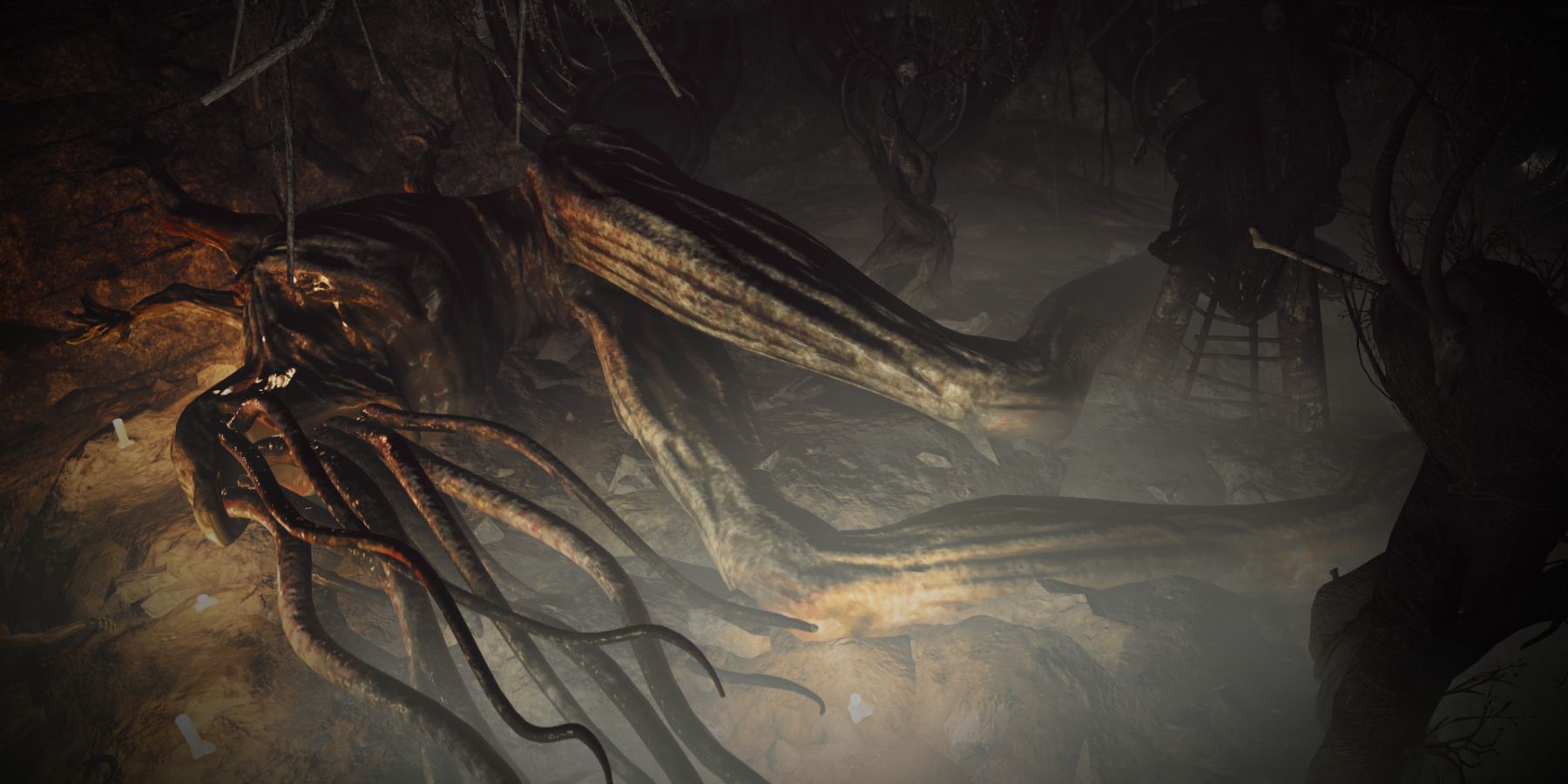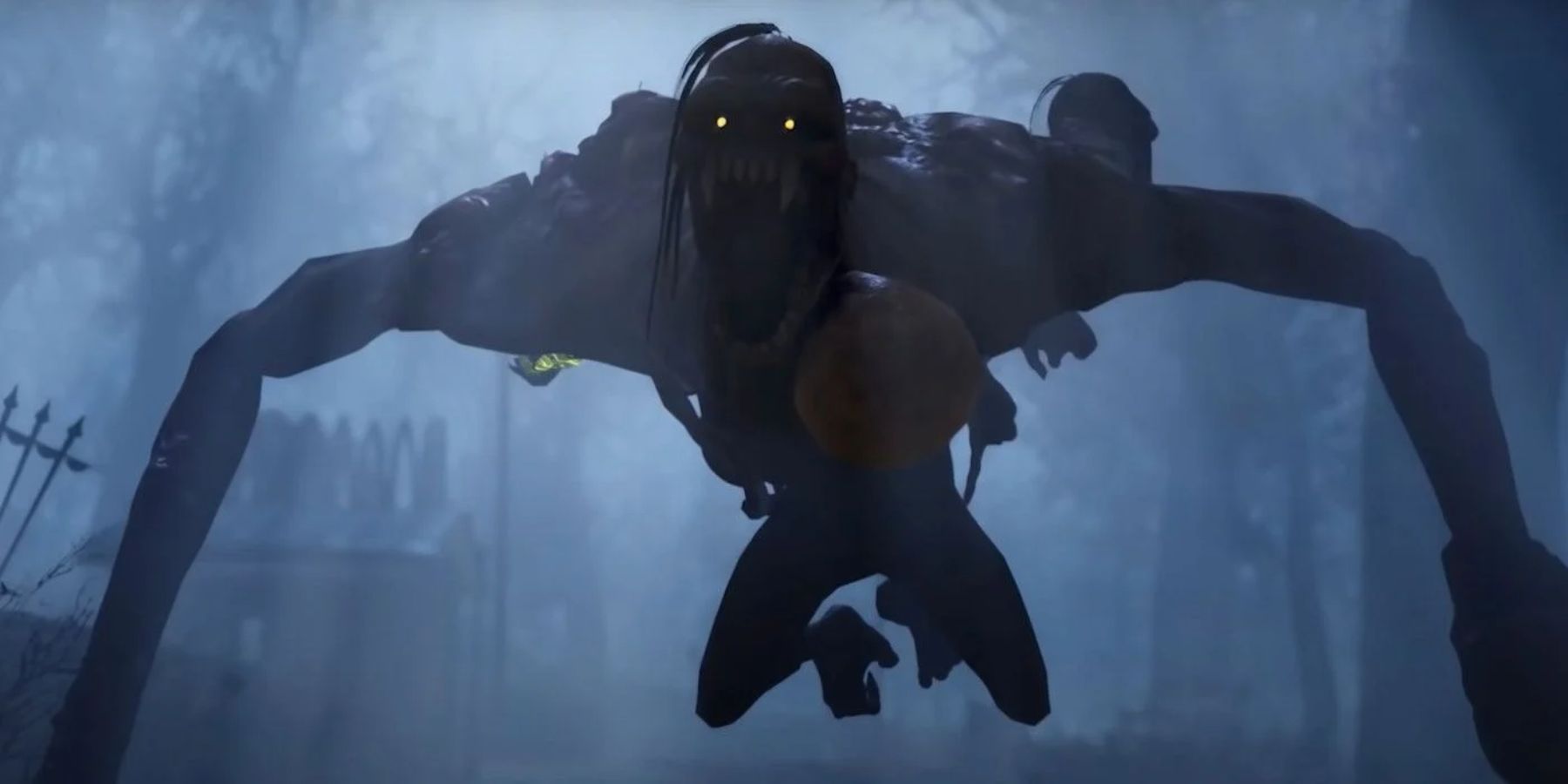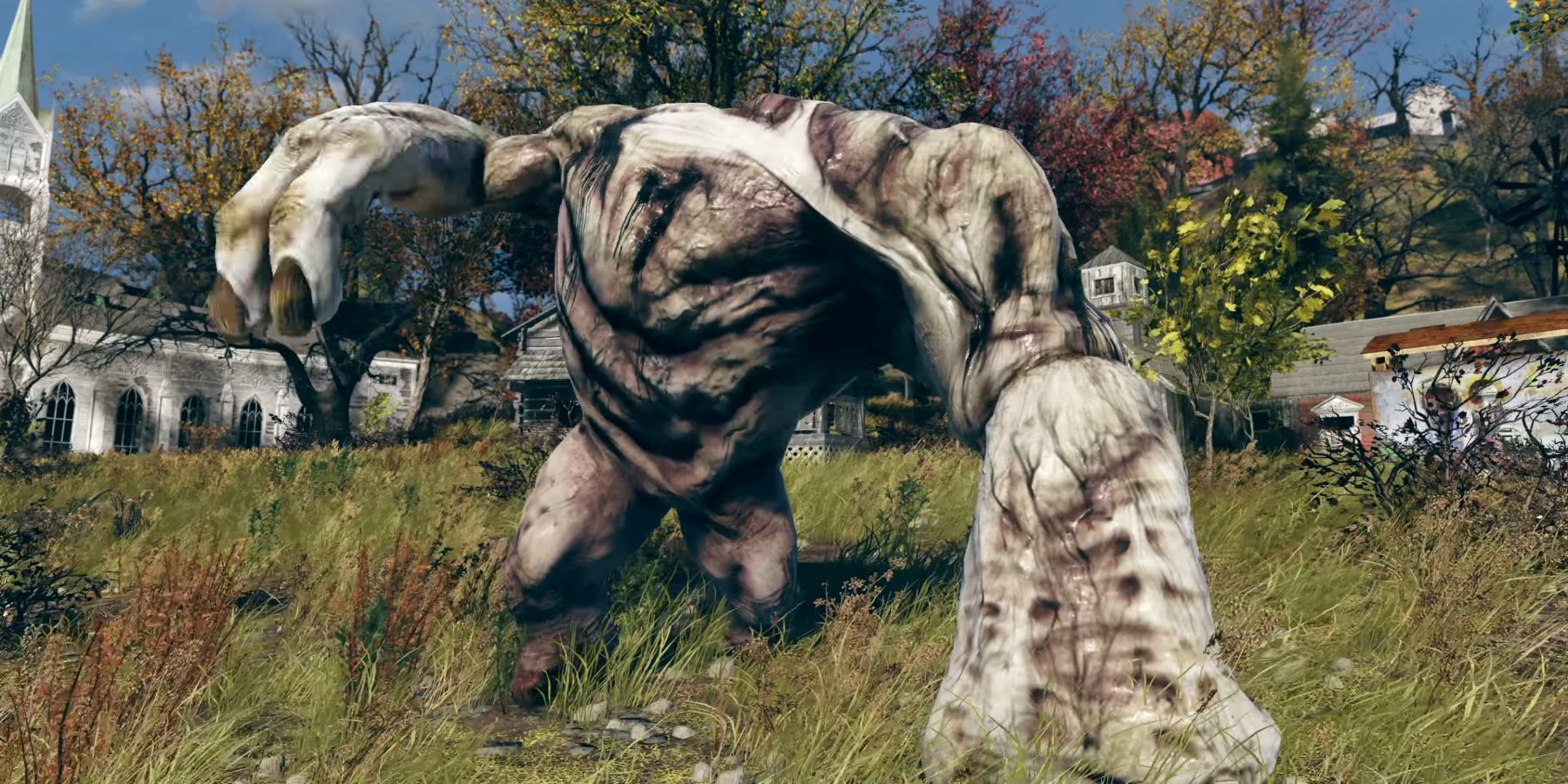Many gamers have looked at Fallout 76 with disappointment, especially when it was first released. Even so, the title is an interesting entry in the franchise, primarily because of how it differs from past titles. Aside from its online gameplay and cooperative modes, Fallout 76 is also the Fallout game with the most horror elements.
The former state of West Virginia — otherwise known as the Appalachian Wasteland — sets the stage for the horrors of Fallout 76. It’s home to plenty of terrifying creatures, some of which draw inspiration from local legends while others are based on popular things in the horror genre.
The Mothman
One of the most popular examples is the Mothman, which appears in Fallout 76. It has an unsettling look to it, being as tall as a human and having large, unblinking eyes. Players can encounter the creature randomly while they explore the wasteland or summon it through the Fallout 76 event quest “The Path to Enlightenment.” There also exists a group known as the Cult of Mothman in the game, and players can find eerie ritual sites filled with altars of worship and even corpses.
In real life, the Mothman is actually a cryptid said to originate from West Virginia. Locals have reported sightings of the creature since 1966, particularly in Point Pleasant, where the Mothman Museum is — both of which can be visited in Fallout 76. In the game, the museum has become a place of worship for the Cult of the Mothman. A portion of the structure has been converted into a chapel, with overgrown roots and strange effigies populating the space. The player can also find notes documenting how the cult wishes to summon the Mothman and learn from its “infinite cosmic wisdom.”
The Interloper
Another strange entity is the Interloper, found in the Lucky Hole Mine — arguably one of the creepiest areas in Fallout 76. Also known as the Firstborn of the Wood, this creature is a large humanoid figure with vine-like tendrils extending from its head. Despite its seemingly dormant state, the Interloper emits a monotonous hum heard by any player in its immediate vicinity, and its tendrils move every so often, indicating that it’s somehow alive, biding its time in the depths of the mine.
Much like the museum, the Lucky Hole Mine has been reworked into a place of worship, and the Cult of the Mothman stayed there for a long time. This started long before the Great War, and because the cult stayed so deep underground, they were saved from radiation damage. However, issues arose when some cult members decided to break off from worshipping the Mothman, instead choosing to follow the Interloper.
One former Mothman follower named Jeff Lane talks of the nature of these entities. He describes the Mothman as merely a creature, unlike the “unknowable horrors of the subconscious mind.” Thus, when the Interloper summons him, Lane follows, stating that he has become a “conduit of the unknowable” and that the hidden reality will soon reveal itself.
In contrast to the Mothman, the Interloper is not based on any legend in West Virginia. Instead, it’s a creature that draws inspiration from H. P. Lovecraft’s mythos. The Fallout series is known for its nods to cosmic horror, so it’s only natural that Fallout 76 has its entry. The fact that the Interloper acts as a gateway into the unknowable is very Lovecraftian, as that specific genre of horror highlights people’s fear of the incomprehensible.
The Wendigos
Another creature is the wendigo, which originates from Native American mythology. These creatures spawn in multiple areas of Fallout 76. They have a humanoid figure with elongated limbs and sharp claws, but no eyes. One of the most memorable wendigos has a name — Morris Stevens. Stevens was once the leader of a raider gang known as the Gourmands, who were cannibalistic. If the player travels to Bolton Greens and reads through the Gourmand’s Terminal, they’ll learn of how things eventually fell apart for the Stevens.
The former leader apparently started eating other gang members, which went against the Gourmand’s code. So he and his wife were sent away, never to return. Players can find him in a location known as the Wendigo Cave, where he’s morphed into the monstrosity. A holotape in the cave also reveals that Stevens ate his wife at one point — and enjoyed it.
In Native American mythology, the wendigo is described as a monster that can never be satiated. It is constantly searching for new victims to tear apart and devour. Some traditions even believe that humans who turn to cannibalism inevitably end up as wendigos, which is likely what happened to Stevens during his time in exile.
More Horrors
These are just some of the most notable creatures and environments from Fallout 76. Though, of course, there are plenty of others in the wasteland. For example, there are other terrifying cryptids that are pulled straight out of the West Virginia legends, like the snallygasters, the Grafton monsters, and the Flatwoods monster. All these can be found in the game, and though they’re not quite as fleshed out as the Mothman, there’s plenty that Bethesda can do to deepen their lore.
It’s also worth noting that some areas don’t need special monsters to be scary. The Alpine River Cabins, for instance, is a seemingly haunted camping ground. If the player finds their way to the site, they’ll hear screams and feel the ground shake beneath their feet. Inside the cabins, doors open and shut, while art pieces spin on the wall. With a little digging, the player can find that these supposed hauntings are mechanically controlled through a terminal on the camping ground - though it’s unclear why anyone would go out of their way to arrange for such theatrics.
Additionally, there’s the Torrance House, which is a nod to Stephen King’s The Shining. Patterned against the Overlook Hotel from the movie, players exploring the area will find a hedge maze, wherein a skeleton sits alongside a fire ax. Inside, players can also come across a set of wooden blocks that spell out “redrum.” Both of these are references to the book, adding to the eerie feeling of the Torrance House.
Despite Fallout 76’s flaws, the Appalachian Wasteland has some effectively scary set pieces, and it’s thanks to all the horrific monsters and unsettling locations. Even though Fallout 76 isn’t a horror game, it’s full of things that would disturb any unsuspecting player.
Fallout 76 is available now on PC, PS4, PS5, Xbox One, and Xbox Series X/S.

